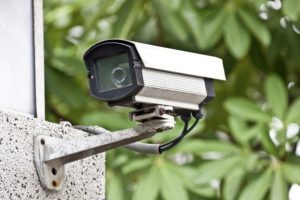
Learn the ways you can connect your security cameras with fiber optics.
Security cameras provide extra safety by discouraging criminals and enabling you to see the premises at all times. More commercial building owners and homeowners are installing security cameras to add protection.
You can connect security cameras with fiber optic, copper wire, or wireless setups. Fiber optics minimize long-distance issues and costs more than copper wiring. However, the superior quality of fiber optics makes up for the higher price.
Connecting security cameras with fiber optic cables provides ultimate protection. We’ll discuss some of the ways you can set up your system.
Use a Pair of Media Converters
Media converters act as translators between signals, and two media converters enable the transfer of recordings across the fiber optic cables. You’ll need RJ45 and SFP ports. The SFP module provides light so the camera can record outside activities.
You can use the SC or LC to connect the converters. The SC makes more sense for anyone looking to connect their security cameras. It can be best to have professionals make this connection for you. Our expertise provides you with a robust system sooner and helps you avoid the learning curve.
We also set up your converters with the required power sources. These sources keep your cameras on at all times.
Fiber with Copper Wire
The fiber PoE (“Power over Ethernet”) extender is a media converter that can replace the front media converter. This converter can handle 12V DC to 48V DC of power. You can reach DC 48V with the help of two copper wires or composite fiber.
A Media Converter and Fiber PoE Switch
The fiber PoE switch helps property owners who have already assembled security IP cameras on the premises. Fiber PoE switches come with several ports which can support multiple security cameras. You’ll only need one fiber link between the fiber PoE switch and the media converter.
An Ethernet cable maintains the connectivity. PoE technology eliminates power sources, saves costs, and simplifies design. The only risk with this approach is that one fiber link powers several cameras. If that link fails to work, all of the cameras shut down. Using one fiber cable per camera mitigates this risk, but it will cost more.
Some people want to save costs with a single fiber optic cable, while others prefer to spread their cameras across several cables.
Fiber PoE Ring Network
This network requires a more complicated setup and is not ideal for most property owners. It connects all of your security cameras across a ring fiber network. If one switch fails, all of the security cameras in the ring network will go offline. You’ll need a specific PoE switch for this network to avoid breaking protocols.
Get in Touch with FiberPlus
FiberPlus has been providing data communication solutions for over 25 years in the Mid Atlantic Region for a number of different markets. What began as a cable installation company for Local Area Networks has grown into a leading provider of innovative technology solutions improving the way our customers communicate and keeping them secure. Our solutions now include:
- Structured Cabling (Fiberoptic, Copper and Coax for inside and outside plant networks)
- Electronic Security Systems (Access Control & CCTV Solutions)
- Wireless Access Point installations
- Public Safety DAS – Emergency Call Stations
- Audio/Video Services (Intercoms and Display Monitors)
- Support Services
- Specialty Systems
- Design/Build Services
- UL2050 Certifications and installations for Secure Spaces
FiberPlus promises the communities in which we serve that we will continue to expand and evolve as new technology is introduced within the telecommunications industry.